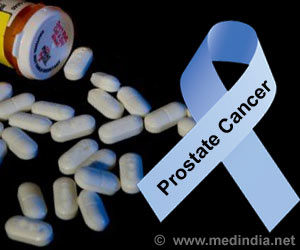High levels of protein HSET among African American women were responsible for worse breast cancer outcomes.

African-American women are often diagnosed with breast cancer at a younger age than non-Hispanic white women and are more likely to have cancers that spread, recur, or result in death. Identification of biomarkers that can help clinicians predict if African-American women will have aggressive cancer is a high priority, according to Aneja.
Prior research has linked HSET overexpression to lung cancer metastasis to the brain, and has shown that HSET is upregulated in a particularly aggressive form of breast cancer that most commonly occurs in African-American women, triple-negative breast cancer.
To evaluate whether HSET could be a clinical breast cancer biomarker in ethnically distinct populations, Aneja and colleagues analyzed breast tumor samples from 149 African-American women and 44 non-Hispanic white women, looking for levels of HSET.
Breast tumor samples from African-American women were three times more likely to show high levels of HSET in a region of cells called the nucleus when compared with breast tumor samples from non-Hispanic white women. In addition, higher levels of nuclear HSET were linked to poorer outcomes among African-American women, but not non-Hispanic white women. African-American women with the highest levels of HSET were three to four times more likely to have shorter overall survival, progression-free survival, and metastasis-free survival when compared with African-American women with the lowest levels of HSET.
"We were surprised to find that HSET levels appeared to be a better predictor of cancer outcome than other routinely used breast cancer predictors, such as assigning triple negative status," said Aneja. "We are working around the clock to define ways in which this new biomarker can be used most effectively and as soon as possible in the clinical setting."
Advertisement
Follow the AACR on Twitter: @AACR
Follow the AACR on Facebook: /www.facebook.com/aacr.org
Advertisement
Founded in 1907, the American Association for Cancer Research (AACR) is the world''s oldest and largest professional organization dedicated to advancing cancer research and its mission to prevent and cure cancer. AACR membership includes more than 34,000 laboratory, translational, and clinical researchers; population scientists; other health care professionals; and cancer advocates residing in more than 90 countries. The AACR marshals the full spectrum of expertise of the cancer community to accelerate progress in the prevention, biology, diagnosis, and treatment of cancer by annually convening more than 20 conferences and educational workshops, the largest of which is the AACR Annual Meeting with more than 18,000 attendees. In addition, the AACR publishes eight peer-reviewed scientific journals and a magazine for cancer survivors, patients, and their caregivers. The AACR funds meritorious research directly as well as in cooperation with numerous cancer organizations. As the scientific partner of Stand Up To Cancer, the AACR provides expert peer review, grants administration, and scientific oversight of team science and individual grants in cancer research that have the potential for near-term patient benefit. The AACR actively communicates with legislators and policymakers about the value of cancer research and related biomedical science in saving lives from cancer.
For more information about the AACR, visit www.AACR.org.
Abstract Number: PR12
Presenter: Ritu Aneja, Ph.D.
Title: Nuclear HSET, a predictor for metastasis, disease relapse and poor survival, is a racial disparity biomarker in triple negative breast cancer patients
Authors: Angela Ogden1, Gabriela Oprea-Ilies2, Padmashree CG Rida1, Dana Nickleach3, Yuan Liu3, Guilherme Cantuaria4, Ritu Aneja1. 1Georgia State University, Atlanta, GA, 2Department of Pathology, Emory University School of Medicine,, Atlanta, 3Emory University School of Medicine, Atlanta, 4University Gynecologic Oncology, Northside Hospital,, Atlanta, GA.
Introduction: Human spleen, embryo, and testes protein (HSET, also known as KifC1) is a minus end-directed kinesin that has recently been implicated in carcinogenesis. HSET overexpression predicts lung cancer metastasis to the brain, and HSET is upregulated in triple-negative (TN) breast cancer that most commonly occurs in African American (AA) patients. While mounting evidence links HSET to tumorigenesis, especially in the breast, HSET is yet to be evaluated as a clinical biomarker in breast cancer. Here, we investigated the association of HSET with demographic and clinicopathological factors and disease progression in breast tumors among ethnically-distinct populations.
Methods: HSET expression was analyzed by immunohistochemistry of formalin-fixed, paraffin-embedded breast carcinoma core biopsies from 149 African American (AA) and 44 Caucasian (CA) totaling 193 patients. Immunostaining was assessed semi-quantitatively for the nucleus and cytoplasm separately. Weighted indices were correlated with tumor and patient characteristics (including ethnicity) along with clinical outcomes.
Results: We found that nuclear HSET expression was highly associated with race, with AA women being thrice as likely to present with nuclear localization compared to CA regardless of TN status. Nuclear HSET expression was also significantly associated with the proliferation marker Ki67 and clinicopathological factors like tumor grade, stage, and size; Nottingham prognostic index (NPI); and TN status. High HSET expression was exclusively associated with poorer outcomes in AA patients and not in CA patients. Within the AA population subset, patients with the highest tertile of HSET expression demonstrated the poorest overall survival (HR = 4.1, p = 0.007), progression-free survival (HR = 3.0, p = 0.014), and metastasis-free survival (HR = 3.5, p = 0.01). These associations were also significant using HSET as a continuous variable in multivariate analysis when potentially confounding factors like age, TN status, and tumor stage were matched. Interestingly, overall, progression-free, and metastasis-free survival were significantly associated with nuclear but not cytoplasmic HSET.
Conclusions: Expression of nuclear HSET is a valuable prognostic biomarker in AA but not in CA breast cancer patients, underscoring its role in the aggressiveness of this disease in the AA population. HSET overexpression appears to be correlated with poorer prognosis in AA breast cancer patients even after adjusting for age, TN status and other tumor characteristics. In summary, our study is the first to identify and report HSET as a novel clinical biomarker of worse prognosis in AA women with breast cancer.
Source-Newswise














